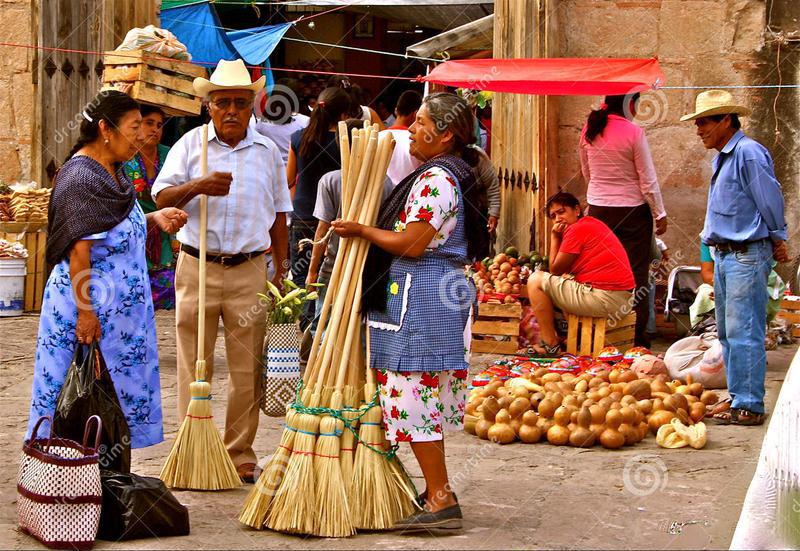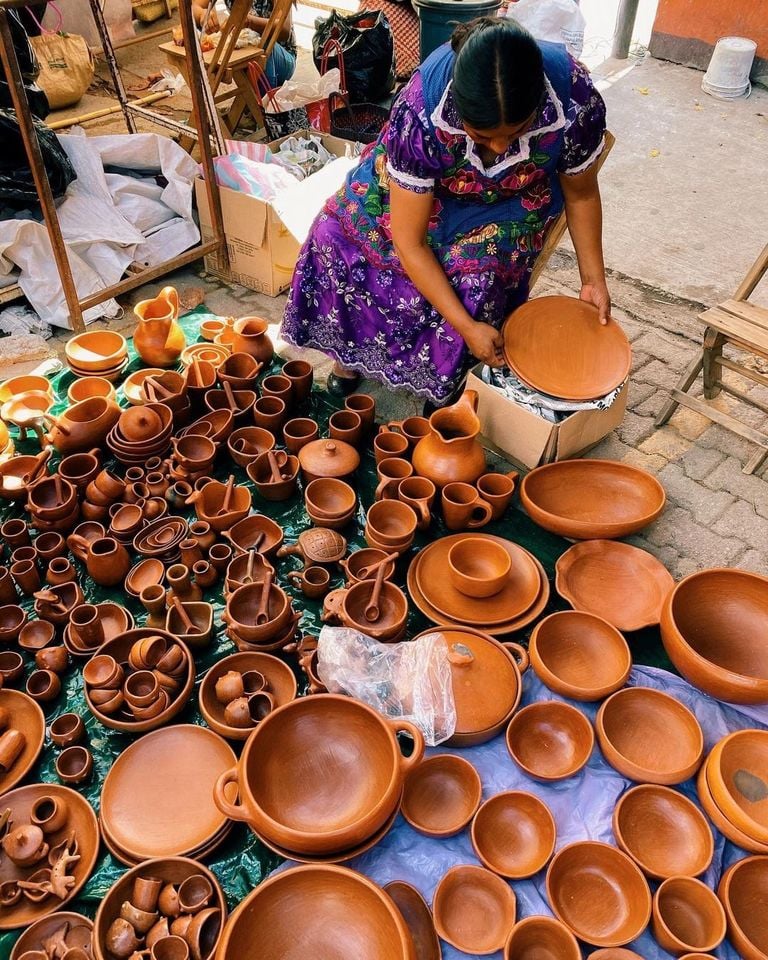

Tlacolula
Tlacolula!
Sunday markets in Mexico are extremely rare, but Tlacolula, about 20 miles southeast of Oaxaca, is the exception. On the way, about 20 miles from Oaxaca, we visited the famous 2,000 year-old El Tule Tree, and sampled the delicious rum-eggnog drink the nuns make.
The Sunday Tlacolula market surrounds the Dominican chapel, which is considered to,be the most beautiful Dominican church in the Americas. We collected from basket weavers, wood carvers and the gourd painters. Just outside the church door, the family who hand crafts the gourds have their booth. These hand painted calabazas, gourds, are among my favorites. After shopping untill we dropped, we stopped for fresh carrot juice, although the papaya juice is equally delicious. Leaving the market, we stopped at the ruins of Mitla where we easily saw the major buildings in less than an hour. The Mitla valley is covered with blue agave plants, and cactus which supplies the mezcal distilleries. To be genuine, the bottle of mezcal must have a worm in it. The liquor is surprisingly cheap, the bottles exceptionally colorful and collectable, and the
taste remarkably vile.
Tlacolula de Matamoros
Founded 1560
1560
Elevation: 5,200 ft
Tlacolula is a city and municipality in the Mexican state of Oaxaca, about 30 km from the center of the city of Oaxaca on Federal Highway 190, which leads east to Mitla and the Isthmus of Tehuantepec. It is part of the Tlacolula District in the east of the Valles Centrales Region.
The city is the main commercial center for the Tlacolula Valley area, and best known for its weekly open air market held on Sundays. This market is one of the oldest, largest and busiest in Oaxaca, mostly selling foodstuffs and other necessities for the many rural people which come into town on this day to shop.
The city is also home to a 16th-century Dominican church, whose chapel, the Capilla del Señor de Tlacolula, is known for its ornate Baroque decoration and a crucifix to which have been ascribed many miracles.
Outside the city proper, the municipality is home to the Yagul archeological site and a number of a group of one hundred caves and rock shelters which document the pre-historic transition of people from hunting and gathering to agriculture based on the domestication of corn and other plants.
The name most likely comes from the Nahuatl phrase tlacolullan, which means "place of abundance." However, some trace the origin to the Nahuatl phrase tlacololli, which means "something twisted." Its original Zapotec name was Guillbaan, which means "village of the burials." The appendage "de Matamoros" is to honor Mariano Matamoros of the Mexican War of Independence.
TLACOLULA
Red pottery at the Sunday mercado of Tlacolula
,

